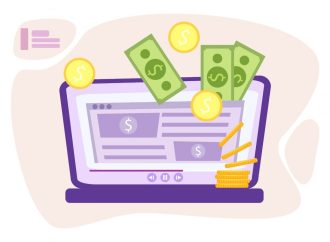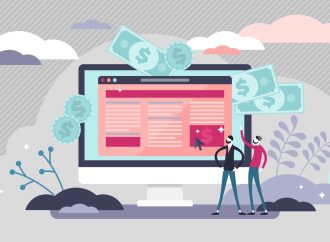Over the years, the digital divide has become an increasingly pressing issue. According to a 2020 report by the Federal Communications Commission, nearly 19 million Americans still lack access to broadband internet — leaving them unable to take advantage of countless opportunities available online. The goal of this blog post is simple: to help close
Over the years, the digital divide has become an increasingly pressing issue. According to a 2020 report by the Federal Communications Commission, nearly 19 million Americans still lack access to broadband internet — leaving them unable to take advantage of countless opportunities available online. The goal of this blog post is simple: to help close the digital divide by exploring what causes it and how we can break down these barriers in 2021. We’ll look at how access is different across different populations (by race, income, and geography) as well as solutions that are being implemented today to increase access for those who need it most.
What is the digital divide?
The digital divide refers to the gap between those who have access to digital technology and those who do not. This includes not only access to the internet, but also access to computers, smartphones, and other devices that can connect to the internet. The divide can be seen in terms of both geographic location and socioeconomic status.
There are a number of reasons why the digital divide exists. One is simply the cost of accessing technology. In some cases, people may live in rural or remote areas where internet infrastructure is not as developed, making it more difficult and expensive to get online. Another reason is lack of skills or knowledge about how to use technology. This can be a barrier for older adults or those from lower-income households who cannot afford to take classes or hire someone to help them get started.
However, there are also many ways to close the digital divide. One is by increasing access to affordable technology and internet service. This can be done through government initiatives like subsidizing broadband access in low-income areas or providing free or low-cost computer and internet access at public libraries. Another way to close the divide is by increasing digital literacy programs that teach people how to use technology for their everyday needs.
Who does the digital divide affect?
There are estimated to be 4.4 billion people around the world who do not have internet access. This digital divide disproportionately affects low-income countries, as well as rural and remote areas. Women and girls are also more likely to be affected, due to socio-economic factors.
Lack of access to the internet can have a number of negative consequences. It can limit educational opportunities, as well as economic and social mobility. It can also lead to isolation and feelings of disconnection from the rest of the world.
There are a number of initiatives underway to try to close the digital divide. These include providing free or low-cost internet access, as well as increasing digital literacy levels.
How can we close the digital divide?
Access to technology has become increasingly essential in daily life. The internet provides a gateway for people to connect with loved ones, find jobs, access government services, and much more. For many people living in rural and low-income communities, however, accessing the internet can be a challenge.
One way we can close the digital divide is by expanding high-speed internet access in rural and low-income areas. This would give people in these communities the opportunity to connect with the world and improve their quality of life.
Another way to close the digital divide is by providing computer literacy training. This would help people in rural and low-income areas become familiar with computers and how to use them effectively.
Lastly, we can help close the digital divide by making sure that all students have access to technology in their classrooms. This would ensure that everyone has the opportunity to learn about and use technology, regardless of their economic background.
What are some organizations working to close the digital divide?
There are a number of organizations working to close the digital divide, including but not limited to:
The Broadband Commission for Sustainable Development, which was set up by the International Telecommunication Union (ITU) and UNESCO in 2010, is charged with monitoring global broadband access and adoption rates, and making recommendations on how to close the digital divide.
One Laptop per Child is a nonprofit organization that provides affordable, rugged laptops specifically designed for use in developing countries. They have distributed over 2.4 million laptops in 44 countries.
World Wide Web Foundation was founded by Tim Berners-Lee, the inventor of the World Wide Web. The foundation’s mission is “to advance the open web as a public good and a basic right.” They work on initiatives to increase web access and affordability, as well as improve web literacy and content creation.
What are some digital divide statistics?
The digital divide is a term used to describe the gap between those who have access to technology and those who don’t. This can be applied to individuals, households, businesses or geographic areas.
There are many ways to measure the digital divide, but one common way is to look at the percentage of people who have access to the internet. According to the International Telecommunications Union, 3.9 billion people – 53.6% of the world’s population – were using the internet in 2016. This leaves almost half of the world’s population without access.
In terms of countries, there is a significant difference in internet penetration rates. For example, 96% of households in Norway have access to the internet compared to just 18% in Ethiopia. When it comes to regions, Europe has an average penetration rate of 79%, while Africa lags behind at only 19%.
There are also disparities within countries. In the United States, for instance, 78% of households with an annual income of $75,000 or more have broadband internet access at home, compared to only 50% of households earning less than $30,000 per year.
These statistics show that the digital divide is a global problem that needs to be addressed. While some progress has been made in recent years, there is still a long way to go before everyone has equal access to technology and its benefits.
How has COVID-19 affected the digital divide?
The novel coronavirus pandemic has shined a light on the digital divide in America. COVID-19 has affected every aspect of our lives, from the way we work and learn, to how we connect with our loved ones. For many people, the internet is now an essential part of daily life. But for millions of Americans, the digital divide is still a very real barrier to access.
According to a recent Pew Research Center study, nearly one in four adults in the United States do not have broadband internet at home. This means they either don’t have internet access at all, or their connection is too slow to effectively participate in online activities like video conferencing or streaming movies.
The digital divide isn’t just about having access to technology. It’s also about having the skills and resources needed to use it effectively. According to another Pew study, only about half of adults in the US say they feel confident using common online tools and applications.
COVID-19 has exacerbated these disparities. For many people who were already struggling to keep up with technology, the pandemic has been a wake-up call. With schools and businesses moving online, there is now an even greater need for everyone to have reliable internet access and the skills necessary to use it effectively.
There are a number of ways we can close the digital divide. One is by expanding high-speed broadband infrastructure into rural and underserved communities. Another
Conclusion
Closing the digital divide is a complex process, and there are still many barriers to access. Understanding these obstacles is key to determining effective solutions. As technology continues to evolve and expand its reach, it’s important for us to focus on breaking down these barriers so that everyone can enjoy the same benefits of being connected. With our current knowledge and resources, we should be able to bridge this gap in 2021 and help ensure equitable access for all.





















Leave a Comment
Your email address will not be published. Required fields are marked with *